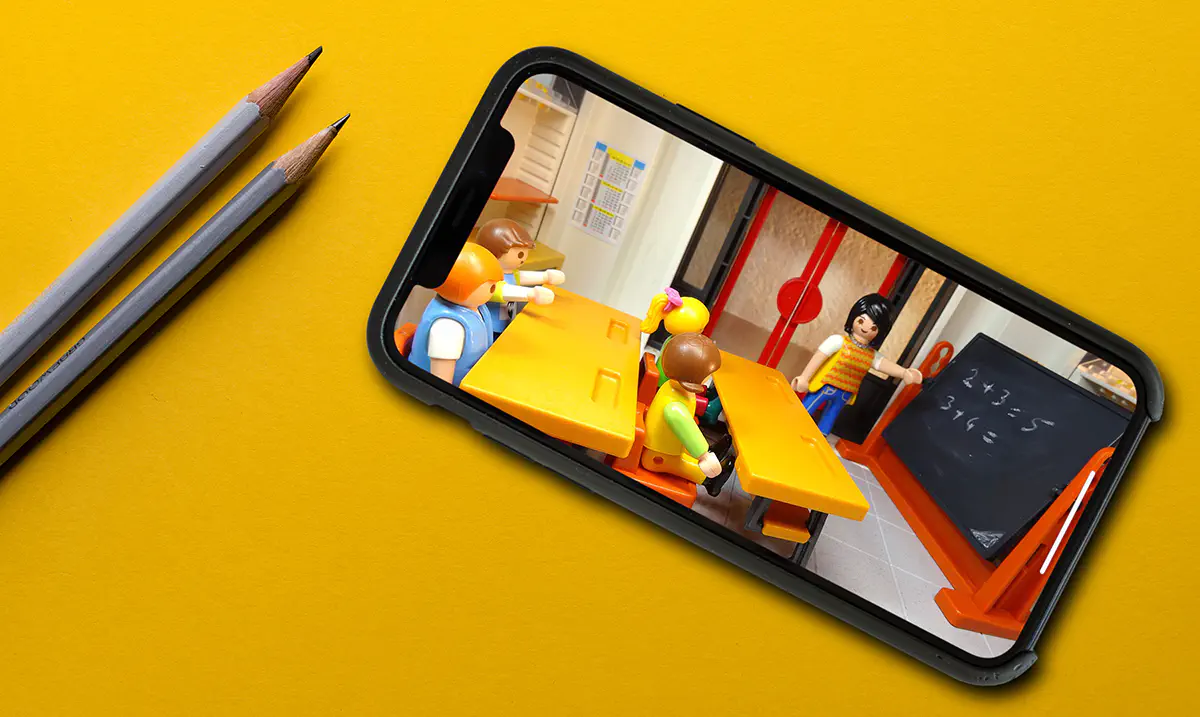How to Build a Language Learning App: 6 Secrets of Success

Learning a new language is almost de rigueur today, as globalization demands multilingual language skills. Language learning is a chance to expand business activities, find new opportunities for employment and to improve one’s intellectual capability.
Today, learners have more options for learning foreign languages. Some people prefer to learn formally by attending classes. Others use digital means, like using videos supplemented by books. For people with busy schedules who want to acquire new skills, downloading and using a language app becomes an effective option. Using a language app provides them a portable way to learn. They are able to include language learning into their schedule as they can learn anytime, anywhere, despite the challenges learning a foreign language presents.
Digital English language learning market is expected to grow by $ 12.38 bn during 2021-2025 progressing at a CAGR of 17% during the forecasted period. This means that there is the possibility to have a source of good income from language learning app development and creating a language app.
How to create a language learning app?
If you ever wondered how to build a language learning app, you should start with creating a course for language learning with a set of exercises, focused on speaking, listening, writing and reading areas. Multiple choice and “tap the match” exercises, as well as sentence translation exercises would be helpful in the learning process as well. You need to make sure that the content of the course is 100% correct and ensure it is not time consuming, so that students would be able to learn on the go.
Gamification and social features are other essential parts that should be included in your app if you want it to succeed. Gamification makes sure that the learning process is entertaining by rewarding users with points, badges, offering to take part in challenges and leaderboards. Social feature allows users to add friends or other users to your social club and learn and compete in the app together, which strengthens user’s emotional attachment to an app. Finally, feedback form is a crucial part of your app since it would allow your users to give their feedback regarding an app and allow you to improve various functionalities and bugs.
Things to consider when building an app for language learning
While building a language learning app may be easy for some developers, making a success out of the app includes careful planning and attention to details. It is vital to provide support to the skills that contribute to mastering a new language. These skills are speaking, listening, writing and reading.
1. Facility to acquire new vocabulary
It is essential for a language learning app to have easy-to-use tools enabling learners to memorize words easily. The app should provide a wide variety of exercises that will help learners engage in learning new words faster without too much effort.
2. Support for listening activity
A good language app should be able to train its users on how to effectively learn speech patterns through listening workouts. You should offer various audio tracks and short videos of speakers talking in their native language and provide specific exercises based on what they have learned.
3. Support for checking pronunciation
Tools for app development are quite advanced, so provide tools that can help the learners check their pronunciation. Consider including a speech recognition tool to help language learners. Including audio clips and dialogues from native speakers will allow the users to check and improve their pronunciation.
4. Support for practicing the language in language apps
Include a tool enabling users to build a community that will allow them to connect, chat and share what they have learned through the app. It will be better if the user is able to connect with native speakers anywhere in the world, like building their own language group in order to share information about the language and their learning progress. Connecting with native speakers in real time and learning from them is an effective way to learn a language faster.
5. Support for reminders
It is easy to put off studying, especially if the learners are doing it on their own. Eventually, the learners might abandon the study, especially if there is no motivation. In developing a language app, remember to include a reminder that will remind the app users to practice every day so they can be motivated. A daily reminder guides users to set their learning goals and track their progress through the completion of daily tasks in order to reach their objective.
Users are more likely to continue studying if they are motivated. Even if they are excited about learning a new language, if they are not captivated by the app, they are likely to lose interest after some time.
The app developer can employ several techniques to catch the interest of users continuously.
- Gamification. Most students, including those attending formal classes, often lose interest because of long and repetitive explanations and routine exercises. Employ gamification to keep users from getting bored. Turning lessons and exercises into games will keep users engaged.
- Competition. Because you are turning the lessons and exercises into games, consider adding a competitive factor into the language learning app. Most app users are used to playing mobile games, comparing their skills with other gamers. So you will keep users motivated by tracking their progress and having a board showing learners who complete their lessons regularly.
- Encouragement. You cannot expect learners to ace their lessons all the time. There will be times when they make mistakes. It is vital to keep them motivated, therefore giving them encouragement as well as tips will keep them interested to continue their lessons.
6. User guide
It is essential that your users fully understand how to navigate and use your app. The app should be rich in features that will guide your users in navigating the app as well as information and tips as the user goes through the lessons.
Help the users by making it easier for them to find information about the course, know their level, track their progress and additional information to understand how the learning app works.
Secondly, offering a personal tutor is beneficial. If a learner is stuck in any part of the lesson, having a virtual tutor that provides detailed information and tips on how to complete that lesson will greatly help the learner. It will motivate the user to move through the lesson instead of abandoning it.
How much does it cost to develop a language learning app?
To reduce costs many enterpreneurs and startups begin with the Minimum Viable Product. The cost of language learning app MVP is significanly lower in comparisson with the final version that perfectly fits your idea. Let’s learn language learning app developmentc cost from the example below.
Learners can test their current language level, in order to be assigned to the corresponding lesson with a teacher. They’ll be able to plan a real-time lesson with the teacher via video conference.
MVP cost of a language learning app
Features | Amount, $ |
Student | |
Registration. Login/logout, password reset, skip registration, Terms of Use/ Privacy Policy. | 4150 |
Personal profile. View and update personal data, change password, delete account. | 3636 |
Payments. View added bank cards, add a bank card, delete bank card. | 2140 |
Subscription. View subscriptions plans, view history of transactions, buy a subscription, restore subscription, unsubscribe. | 2833 |
Video | 575 |
Assess language level | 4360 |
Lesson (Speaking/Live Class) | 2790 |
Admin | |
Authentication | 235 |
Users and levels management | 1224 |
Live Classes | 918 |
Approximate cost | 22,861 |
Duration: | 8 weeks |
In conclusion
Creating a successful language learning app requires careful planning and attention to detail. To provide users with an engaging and effortless experience, the app should include a range of features such as well-planned lessons led by native speaker teachers, interactive and visually appealing learning resources, and a user feedback feature. By incorporating these key elements, language learning apps can offer learners a convenient and effective way to master a new language.
Don't want to miss anything?
Subscribe and get stories like these right into your inbox.
Keep reading

Creating a Mobile eLearning Environment: Key Considerations
eLearning has transformed education, moving from paper to app-based platforms, with a trend toward using smartphones for convenient virtual classrooms.

eLearning Mobile App Development: Practical Guide
Educational mobile apps are becoming increasingly popular. Dive into our comprehensive e-learning mobile app development guide to gear up for the launch of your own project.

Virtual Classroom Software: Features and Benefits
Want to build your own virtual classroom software? In our blog post, we share our practical recommendations on how to do it.
Contact us
Let's explore how our expertise can help you achieve your goals! Drop us a line, and we'll get back to you shortly.